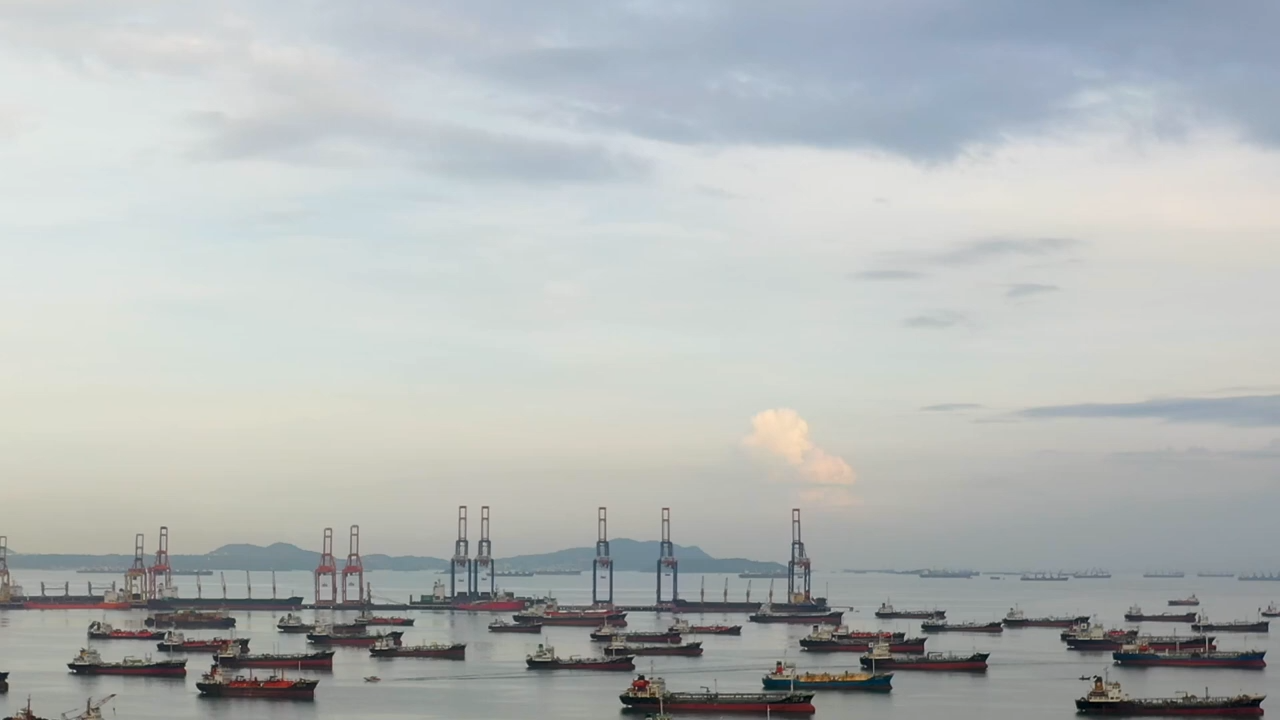Sustaining the rally for dry bulk carriers


The dry bulk shipping industry is experiencing a banner year. Profits are at multi-year highs1 and expected to remain strong for the foreseeable future. But at the same time, carriers are coping with various challenges: balancing their desire to reward shareholders with long-awaited dividends with the need to invest in sustainable technologies to conform to increasingly stringent regulations aimed at reducing emissions, while ensuring the wellbeing of overworked crews in the midst of a pandemic.
Dry bulk carriers, like their counterparts in the container shipping business where freight rates have nearly quadrupled in recent months,2 have enjoyed a bountiful year. Driven by a post-pandemic economic recovery, which has fueled demand around the world for goods like iron ore and coal and pushed global supply chains to breaking point, the rates to charter dry bulk carriers of all sizes have risen by nearly 2.5 times since the start of 2021.3
The Baltic Dry Index, an industry benchmark, hit a 12-year high in September.4 Going forward, a shortage of dry bulk vessels5 is expected to coincide with growing demand for goods like coal,6 iron ore7 and steel8 from both emerging and developed markets. Flush with government stimulus funds, they are launching ambitious infrastructure development plans9 that are likely to push prices higher.10
“It’s been an amazing ride for the industry so far. And given the demand and supply side pressures at play – port congestion and its spill-over effects, a limited supply of vessels, coupled together with a firm rebound in demand for iron ore, grains and coal – the outlook remains firm,” noted Amy Chow, Executive Director, Standard Chartered, speaking at the Marine Money Week Asia 2021.
Industry observers are keen to understand how shipping companies plan to capitalise on the newfound liquidity and deploy the funds. Will they spend their record profits on new vessels? Will they resume paying dividends to shareholders? Or will they use the cash to pay off debt and deleverage their businesses? Or invest in new technologies to make their fleets greener?
There appears to be some consensus among the key industry players on all these points. For one, owners are exceedingly wary of adding capacity by commissioning new vessels11 – a caution stemming from the severe downturn experienced by the industry in the wake of the global financial crisis as a result of adding excess capacity in the preceding years.12 At the same time, dry bulk operators are being crowded out of shipyards handling a surge in fresh orders from companies operating container vessels and tankers.13
For these reasons, carriers are choosing to focus on enhancing the utilisation rates of their current fleets and acquiring used ships, especially in the capesize category, which are seen as the most undervalued of all dry bulk vessels. There is also a growing emphasis on reducing debt and rewarding shareholders for their patience with dividend payouts, which had dried out as the industry hit rough weather following the financial crisis.14

Another critical factor driving the decision to hold back on investing in new ships is the risk of vessels becoming obsolete as the industry moves rapidly towards adopting cleaner propulsion technologies, in line with the goal to reduce shipping’s carbon emissions.
Most bulk carriers are investing in retrofitting their existing fleets with energy-saving technologies to bring their fleets in line with new regulations that require ships hauling dry bulk to switch to low-sulphur fuels.15 This includes installing so-called scrubber devices that clean the exhaust fumes emitted by ocean-going vessels.16
Operators around the world are also turning to acquiring vessels that use cleaner fuels such as LNG, while pouring funds into researching the potential of zero emission fuels.17 These efforts are aided by the growing availability of sustainable finance solutions, such as those arranged by Standard Chartered, which has funded dry bulk carriers around the world with loans tied to sustainability targets in line with the UN’s sustainable development goals (SDGs).18
With dry bulk carriers being responsible for large portions of global trade, innovations in technology, alternative fuels and financing will be critical to accommodate the industry’s transition.
Last but not the least is concern for the safety of ocean-going crews and the challenge of getting them vaccinated. Since the early days of the pandemic, workers on oceangoing vessels have been prevented from coming ashore at ports of call by various local governments, in effect forcing them to spend months at sea.19 The carrier companies argue that this is a violation of the Maritime Labor Convention20 and urge signatory governments to honour the agreement by allowing crew members to come ashore and enable them to travel to visit their families and get vaccinated. Failing which, industry officials caution, experienced workers fearing for their mental and physical wellbeing will continue to exit the profession, worsening the ongoing supply chain crunch.21
Undoubtedly, dry bulk carriers are looking to the future from a position of strength. Yet there is also a recognition of the issues that need to be addressed before the industry can make the most of the opportunities presented to it by the confluence of ongoing macro trends.
Despite these near-term challenges, the overall outlook remains positive – with industry insiders describing it as the perfect storm. However, unlike most storms, seafarers weather on the high seas, bulk carriers will not want this one to blow over any time soon.
This article is based on themes discussed during a panel at the Marine Money Week Asia 2021.
1 https://www.marinelink.com/news/dry-bulk-profits-surge-multiyear-highs-490607
2 https://www.economist.com/finance-and-economics/a-perfect-storm-for-container-shipping/21804500
3 https://www.marinelink.com/news/dry-bulk-profits-surge-multiyear-highs-490607
4 https://www.maritimeprofessional.com/news/baltic-index-hits-year-peak-370773
5 https://www.theedgemarkets.com/article/dry-bulk-and-container-freight-rates-set-stay-elevated-year-say-industry-players
6 https://www.spglobal.com/marketintelligence/en/news-insights/latest-news-headlines/us-coal-demand-is-rising-but-supplies-remain-tight-66708145
7 https://www.ft.com/content/4b3aed47-c049-41c6-ad87-0cfaabf6a7b3
8 https://www.bloomberg.com/news/articles/2021-04-27/global-steel-boom-builds-as-rampant-demand-overwhelms-supply
9 https://www2.deloitte.com/global/en/pages/public-sector/articles/infrastructure-development-as-economic-stimulus-for-emerging-markets.html
10 https://www.bloomberg.com/news/articles/2021-08-23/dry-bulk-shipping-rates-are-soaring-and-the-rally-looks-set?sref=C3PowTFL
11 https://www.maritimeprofessional.com/news/baltic-index-hits-year-peak-370773
12 https://www.bimco.org/news/market_analysis/2020/20200423_overcapacity_and_
low_demand_graph_set_the_tone_in_the_2010s
13 https://www.maritime-executive.com/article/bimco-strong-rebound-for-shipbuilding-orders-in-five-months-of-2021
14 https://www.reuters.com/article/starbulk-idUSBNG43208020090212
15 https://www.spglobal.com/platts/en/market-insights/latest-news/shipping/121119-imo-2020-fuel-switch-prompts-bulkers-to-load-less-cargo-to-enable-higher-bunker-intake
16 https://theicct.org/blog/staff/scrubbers-open-loophole-062020
17 https://www.nyk.com/english/news/2021/20210720_01.html
18 https://www.themaritimestandard.com/standard-chartered-signs-sustainability-based-finance-deal/
19 https://apnews.com/article/coronavirus-pandemic-pandemics-lifestyle-travel-health-bfe0519a843476dbda0b0cdeb0a703e8
20 https://www.ilo.org/global/standards/maritime-labour-convention/lang–en/index.htm
21 https://www.bloomberg.com/news/articles/2021-08-25/the-world-economy-s-supply-chain-problem-keeps-getting-worse
Turning expertise into actionable insights. Explore our views on what to watch out for in today’s financial markets.